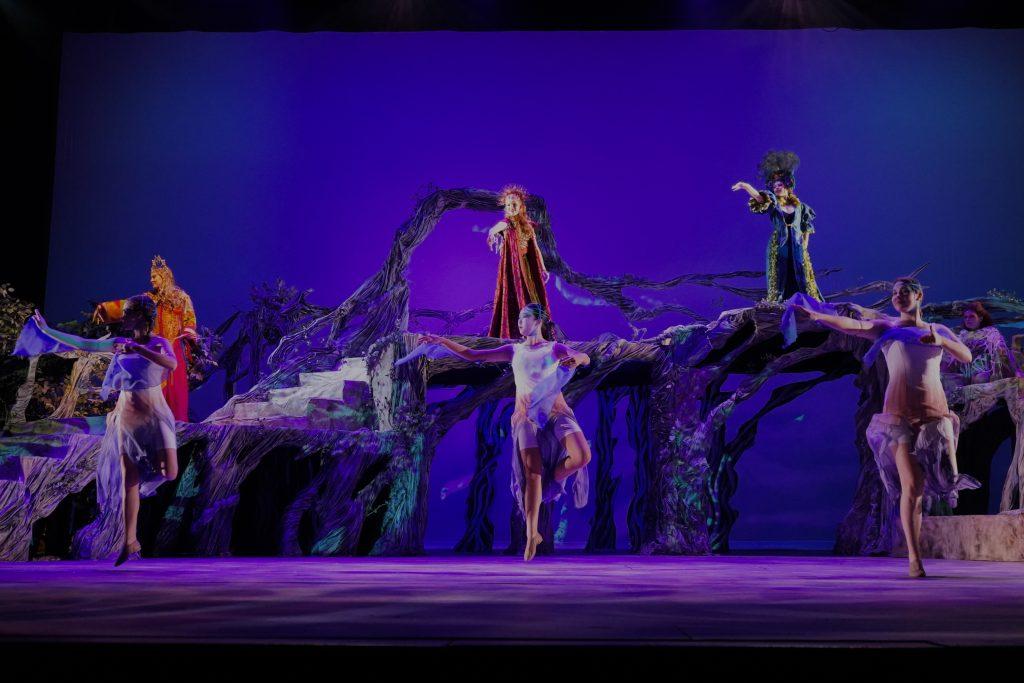
Shipwrecked shores, swirling magic and sweet first love — on the surface, “The Tempest” is a comedy. Diving deeper, the story deals with themes of revenge and reconciliation.
From April 3-6, Pepperdine’s Theatre program presented their adaptation of William Shakespeare’s “The Tempest” in Smothers Theatre.
Director Cathy Thomas-Grant said she chose the play for its hopeful message of forgiveness after one has been wronged. She reads this play as an example of broken relationships restored.
“It’s hard to forgive sometimes, especially if it’s betrayal,” Thomas-Grant said. “You have this opportunity to seek revenge, but you choose virtue over vengeance.”
Thomas-Grant avoids making colonialism, typically a major theme of “The Tempest,” her focus in favor of bringing a performance of light and magic to a world filled with heartbreaking headlines, she said. This decision is significant because the context of the British Empire and “New World” is a large part of the scholarly and performance conversation surrounding the text, according to Shakespeare’s Globe.
“I did want to avoid the colonialism kind of thing and focus more on, you know, virtue over vengeance,” Thomas-Grant said. “But, I am nervous about what people’s expectations will be when they come and see it.”
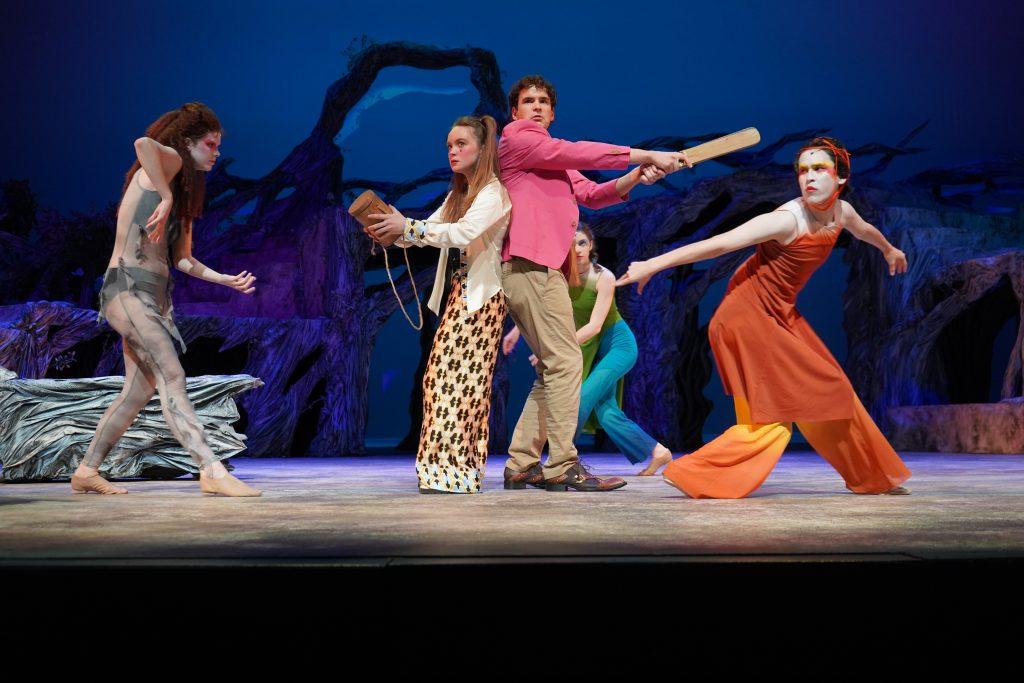
Female Leads
Another major change Thomas-Grant makes is casting women in many of the traditionally male roles, she said. The magician, Prospero, is Prospera in Thomas-Grant’s version, creating a mother-daughter relationship with her daughter Miranda, which creates a different resonance than the original father-daughter dynamic.
Senior Chloe Higgins, who plays Prospera, said she initially struggled with performing the character powerfully as a woman.
“I had been thinking so much about gender in the first couple weeks of the process because I felt like I couldn’t hold all the power that I was supposed to hold in my body, my age, being a woman,” Higgins said. “I kept trying to lower my voice.”
The process damaged her voice, and she had an infection for weeks, Higgins said. After talking to a voice coach, Higgins realized a higher register could convey motherly power, altering the audience’s perceptions of the archetype of power.
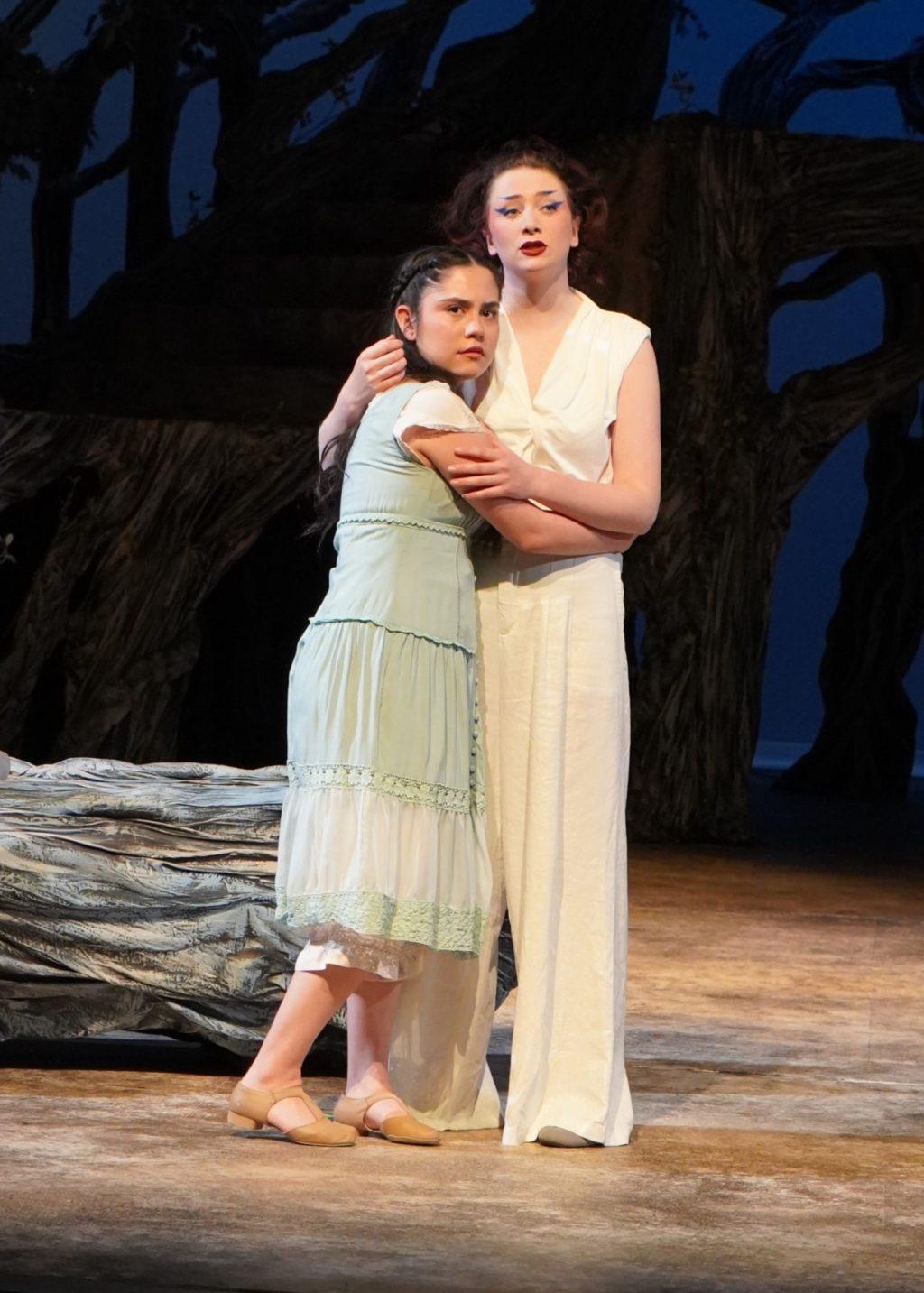
Junior Genesis Ochoa, who plays Miranda, Prospera’s daughter, said many productions portray Miranda as a naive, muted, passive island princess, and her performance seeks to break these stereotypes. Ochoa reads Miranda’s speech to Caliban in 1.2 as showcasing her intelligence, strong-mindedness and boldness.
“It was very important because you’re having a female play the lead, play Prospera,” Ochoa said. “It’s important for that to show off, essentially in Miranda’s character, if that’s her mother, and if that’s what she sees in her daily life.”
Non-human Characters
Senior Kayla Bryant, who plays Ariel, a spirit of the air, said a lot of her movements on stage are designed to look different from human characters — elemental and almost bird-like.
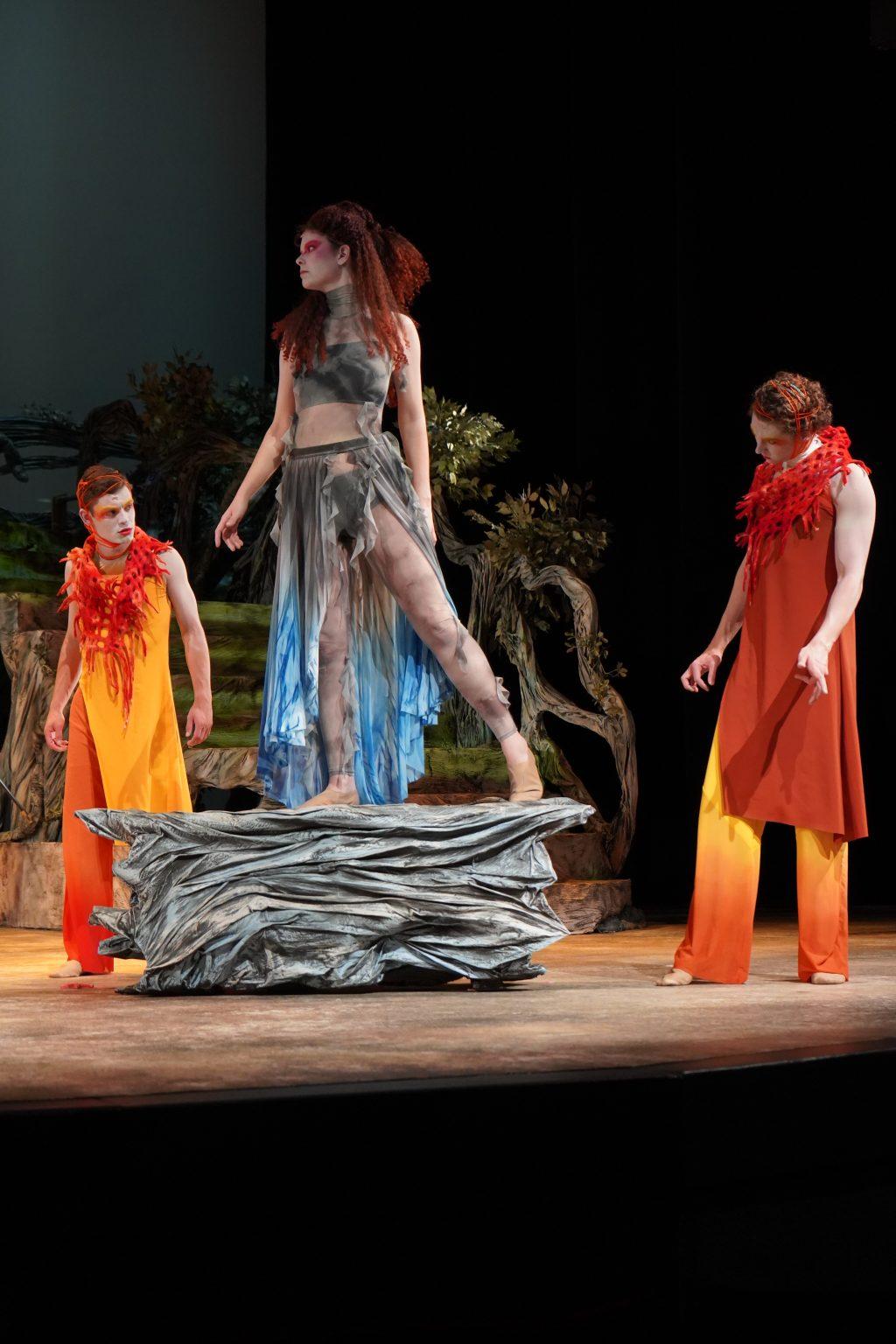
“Ariel is like a spirit of the wind and water,” Bryant said. “On this island, where the place takes place, this character is very powerful in controlling the elements.”
Despite Ariel’s non-human characteristics, at times, Ariel behaves very humanly, Bryant said.
Ariel sees love blossom between Miranda and Ferdinand for the first time and asks Prospera, “Do you love me?” in 4.1, Bryant said. Later, in 5.1, Ariel sympathizes with the suffering of Prospera’s prisoners and convinces her to let them go.
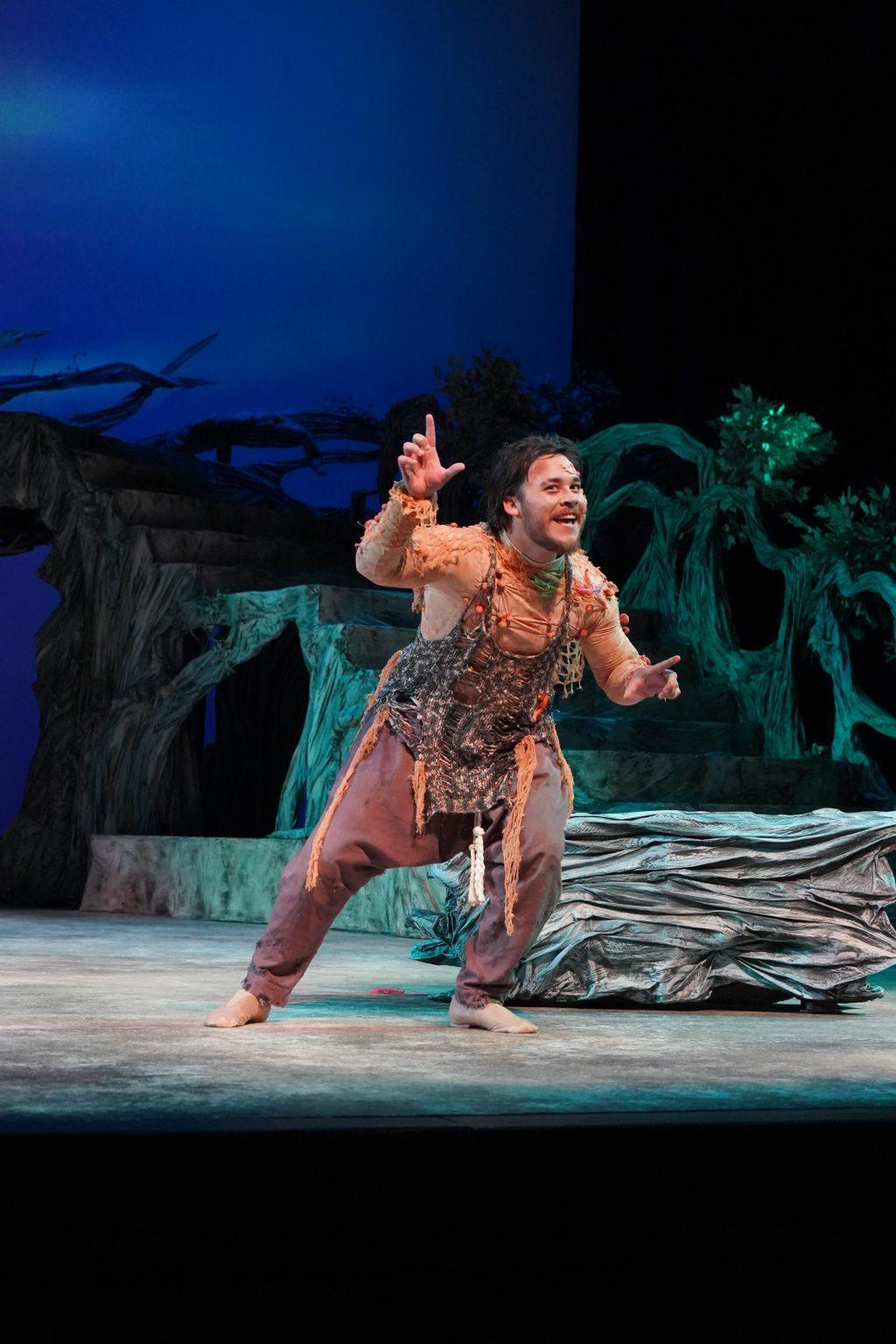
Senior Matthew Hamm, who plays Caliban, said his character is ambiguously described by other characters as a monster, fish-man and wayward islander, allowing for many performance possibilities. Caliban’s complex character also exhibits a moral tension between blame and pity.
“As much as he is this monster, is full of anger and resentment — specifically because of him having to be a servant — he has a love for the island,” Hamm said. “The contrast to this monster is that humanity that’s still inside of him.”
Caliban’s humanity is still present when other characters view him as less than or other than human for his appearance or actions, Hamm said. Caliban could be the most relatable and interesting character in the play because of the choices he makes based on the challenging circumstances he’s faced with.
“Caliban, nowhere in this play, really sees a world in which he is free, in which he’s not serving somebody else, in which he is just a free man,” Hamm said.
Caliban is integral to the story and creates an opportunity for the audience to consider what it means to be free if all characters deserve forgiveness and if they all truly receive it at the end of the play, Hamm said.
Costuming Decisions
“There’s a lot of different worlds that are kind of colliding on the island, some beautiful, some more realistic, some a little bit more terrifying,” costume designer Melanie Watnick said. “The idea is to create all of the components of the worlds that are all very distinct and kind of see how they work together.”
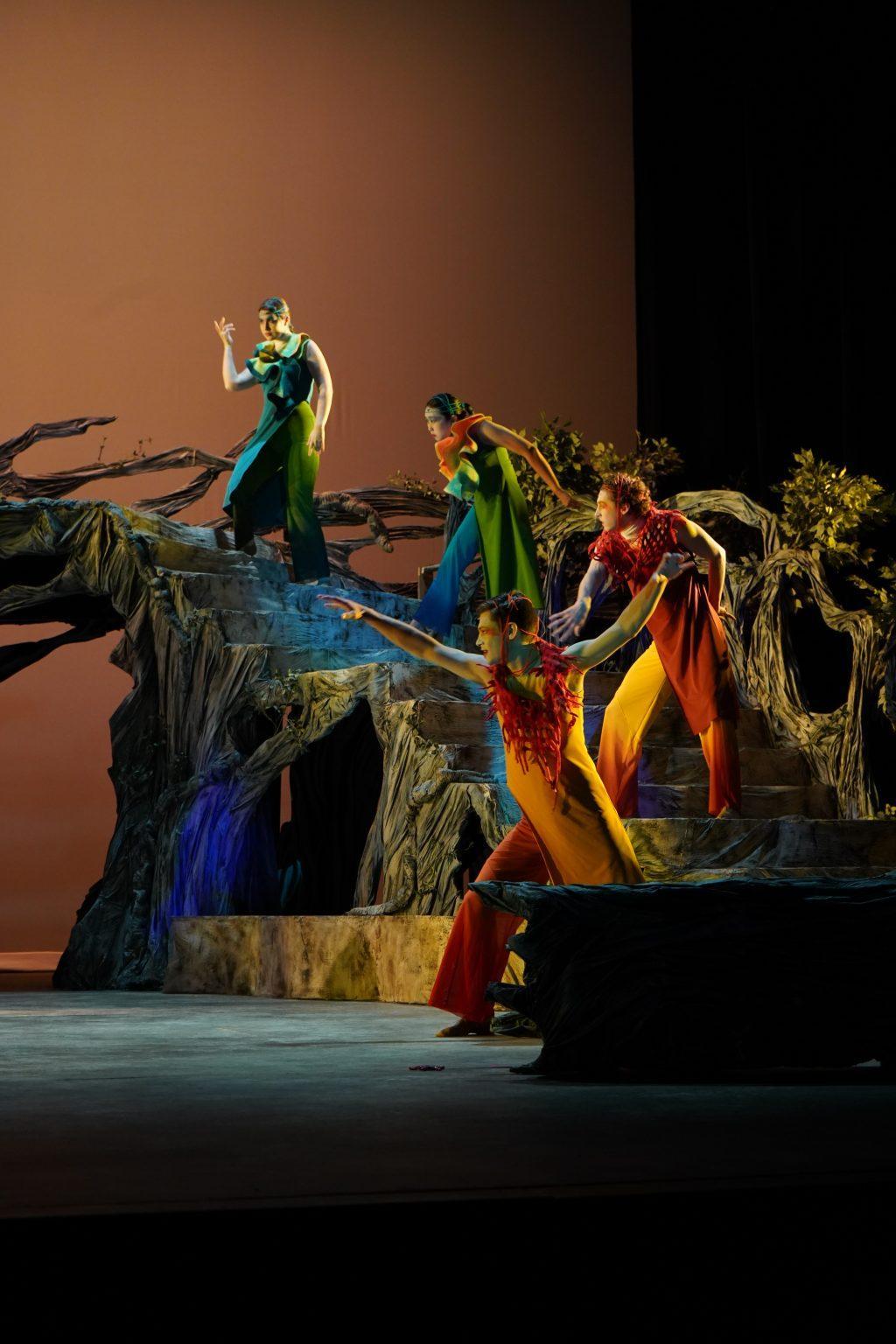
Characters like the spirits and Ariel do not have gender-specific costumes because they do not conform to this human-constructed category, Watnick said.
“It was interesting to me the idea of these kind of non-human beings that I really wanted to make sure that it wasn’t about gender — and that the clothing themselves wasn’t specific male or female because that’s not important to a spirit that can shapeshift,” Watnick said. “They fluctuate, and their silhouette is not gender specific.”
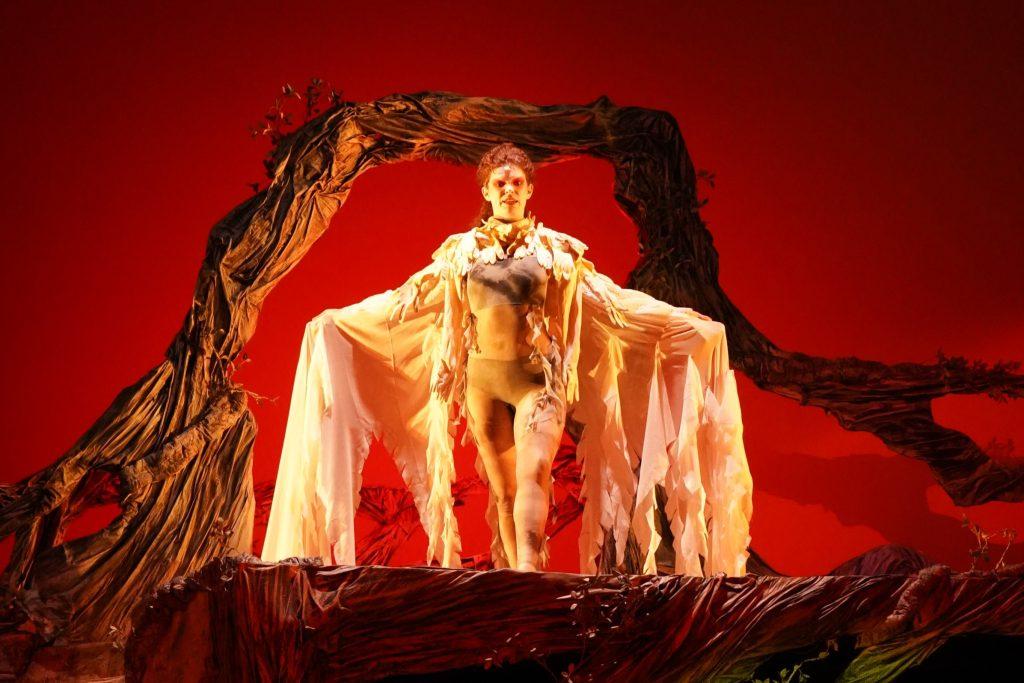
Watnick also aims to capture the range of scenes and emotions in the play, she said.
“I did want it to feel unusual and unexpected,” Watnick said. “‘The Tempest’ can be a little scary at times.”
___________________
Follow the Graphic on X: @PeppGraphic
Contact Madison Luc via email: madison.luc@pepperdine.edu

